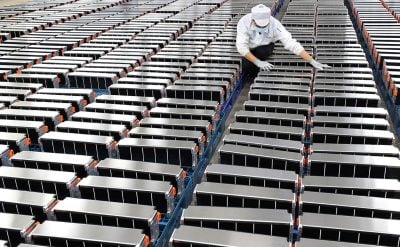While new president Uhuru Kenyatta faces some testing political and diplomatic challenges, his government inherits a more promising Kenyan economy than at any time over the past quarter of a century. The benefits of the East African Community should begin to filter through over the next few years; the country is benefiting from global optimism over Africa’s economic prospects; and oil and gas production should complement what is already a more balanced economy than most of its rivals on the continent. Report by Neil Ford
Kenya has experienced several previous false dawns and has certainly not made the most of its economic advantages over the past 25 years. With a developed banking sector, relatively diverse economy and leading position within East Africa, it has not built on its early success. This failure can partly be attributed to a combination of poor governance and a high level of corruption. In addition, most forms of infrastructure, including in the transport and power sectors, have been inadequate to cope with national ambitions.
Other problems include poor tax revenue collection, although this has slowly improved over the past decade; and inefficient state-owned companies, which are mostly a burden rather than an asset to taxpayers. Causes of political and security instability include the threat of Islamist terrorist groups, such as from neighbouring Somalia; and inter-ethnic conflict, which claimed 2,000 lives in 1992 and 1,500 more in 2008, on both occasions in the west of the country.
As with most new governments, Kenyatta’s ministers are enthusiastic about what they can achieve but some of their initial goals seem like distant aspirations rather than concrete goals. Kenyatta himself has promised to push annual economic growth into double figures and to create one million new jobs a year. Such highly ambitious targets have been set elsewhere in Africa, usually without success. However, the aim of achieving middle-income country status by 2030 seems a far more realistic goal.
The economy has grown by an average of 4.3% a year over the past two years and growth should speed up slightly over the next 24 months. Although the World Bank forecasts growth of 5.7% for this year, it believes that the economy is still operating below its potential and remains vulnerable to external shocks. The relatively peaceful election has increased investor confidence, while national reserves of foreign currency have now risen to KSh506bn ($6.2bn). In addition, the central bank’s control of interest rates should help to take some of the steam out of price rises. Inflation is now falling and could soon descend to the central bank’s target range of 2.5-7.5%.
Nairobi had planned its first Eurobond issue for late November but the deadline has been pushed back to next year. Kenya hopes that it will raise at least $1.5bn. The money raised will be used to help fund infrastructural projects and pay off higher interest loans. IMF Africa director Antoinette Monsio Sayeh stated: “It will be very important to continue the efforts on the fiscal side that are under way to have a medium-term fiscal policy that is seen to be well crafted. Kenya will have to continue to be prudent over what it borrows and what it borrows for.”
A diverse economy
Key sectors include tourism, horticulture and banking. As we discuss later, the tourist sector is prone to political and security instability but has the potential to make a growing contribution to economic development. Agriculture employs about 75% of the population and accounts for 28% of GDP, although most of this economic activity is concentrated in the export-orientated tea, coffee and horticulture sectors. The cultivation of other crops is severely constrained during periods of drought.
Kenya has had relatively little mining activity, although there has been a spurt of new interest lately but it is the manufacturing centre of East Africa. Rising labour costs in China and other parts of Asia could see outsourced manufacturing switched to sub-Saharan Africa over the next decade and Kenya is well placed to take advantage of this process. Apart from large-scale oil and gas production, such a manufacturing boom is perhaps the only way that the country can achieve economic growth consistently in excess of 10% a year.
Kenya has long been established as the banking and trading centre of Eastern Africa and could prosper as economic development in the wider region takes off. Kenyan banks are rapidly expanding into neighbouring markets by setting up local subsidiaries, including in South Sudan, Rwanda and Burundi. In addition, new investment in port, rail and pipeline infrastructure should help to reinforce the country’s position as a trade entrepôt. Oil production in Uganda, South Sudan and possibly also Ethiopia and Kenya itself is likely to be transported by pipeline to the port of Mombasa and a planned new port at Lamu for export. New road and rail links from landlocked Ethiopia and South Sudan should encourage more general trade through Kenyan ports. The Westgate shopping centre attack in October shocked all of Kenya but should not have a long-term impact on the economy.
The head of an IMF mission to Kenya,
Domenico Fanizza, said: “Other countries that have experienced this show that if a terrorist attack is short lived and is a one-off, then it will not affect economic growth. Kenya has proved resilient.” He reported that Kenya had made substantial progress on economic reform over the past three years and added: “The economy has proved resilient in the face of exogenous shocks such as the 2011 drought, and stagnating demand in traditional export and tourism markets as a result of the global financial crisis.”
Oil and gas
Successive Kenyan governments have desperately sought to encourage upstream oil sector investment but piecemeal exploration efforts over many years were without success. Yet commercial oil and possibly gas production now looks more than likely. Tullow Oil and partner Africa Oil Corporation have discovered oil in the Lockichar Basin, prompting the IMF to report: “Big oil discoveries in the northern Turkana region have now made Kenya a major venue for oil exploration in East Africa. Kenya expects to start producing oil in six to seven years”.
The chief executive of Africa Oil Corporation, Keith Hill, added: “With the drilling programme we have got this year, it’s possible we will start getting close to those thresholds by the end of the year … But it’s really hard to predict: it would depend on the success of the upcoming wells.” Following on from successful oil and gas exploration in Mozambique, Tanzania and Uganda, 22 oil companies are now actively exploring for hydrocarbons on 45 blocks in Kenya.
Commercial oil production would generate more export revenue for the country and could also be used to supply the existing oil refinery in Mombasa. In addition, gas could be used to supply local fertiliser and cement plants, as well as new thermal power plants. Kenya has long suffered from inadequate, reliable power supplies but new gas-fired capacity, the recent agreement to import Ethiopian electricity and the 300 MW Lake Turkana Wind Power project could help to solve this problem.
The new government appears to be banking on the power sector to help drive economic growth. Energy Minister Davis Chirchir has set a goal of boosting national generating capacity from 1.7 GW at present to 7.2 GW within three and a half years. He said: “We will need about $10bn to $15bn in investment to reach that target. We need that power to support double digit economic growth.” Just 24 MW of this new capacity is to be provided by hydro schemes, with the remainder supplied by thermal, geothermal and wind power.
Two independent power producers (IPPs) are planned. One will be a 1 GW coal-fired plant at Lamu, which will be supplied with coal by mining firms in Southern Africa. The other will be a 7-800 MW gas fired facility at Dongo Kundu in Mombasa, which the government anticipates will be supplied with liquefied natural gas (LNG), probably from the Middle East, in the short term at least. The government has not discussed the possibly cheaper option of importing gas from neighbouring Tanzania, which could suggest that it hopes to develop its own gas reserves in the longer term.
Tenders for both IPPs are to be launched by the government, which has already made it clear that it expects the cost of electricity to determine the tender. Nairobi has indicated that it wants industrial tariffs for electricity to fall from $0.15/kWh to $0.09/kWh in order to attract industrial and manufacturing investment. However, the deadline of just 40 months to complete these tenders and oversee the construction and commissioning of a string of new generation projects seems overly optimistic and is a timescale that few countries elsewhere in the world have ever achieved. Pushing national capacity up to 7.2 GW by 2020 would be a huge success in its own right. Ambition is all very well but it must be accompanied by a dose of realism.
Want to continue reading? Subscribe today.
You've read all your free articles for this month! Subscribe now to enjoy full access to our content.
Digital Monthly
£8.00 / month
Receive full unlimited access to our articles, opinions, podcasts and more.
Digital Yearly
£70.00 / year
Our best value offer - save £26 and gain access to all of our digital content for an entire year!
 Sign in with Google
Sign in with Google 


